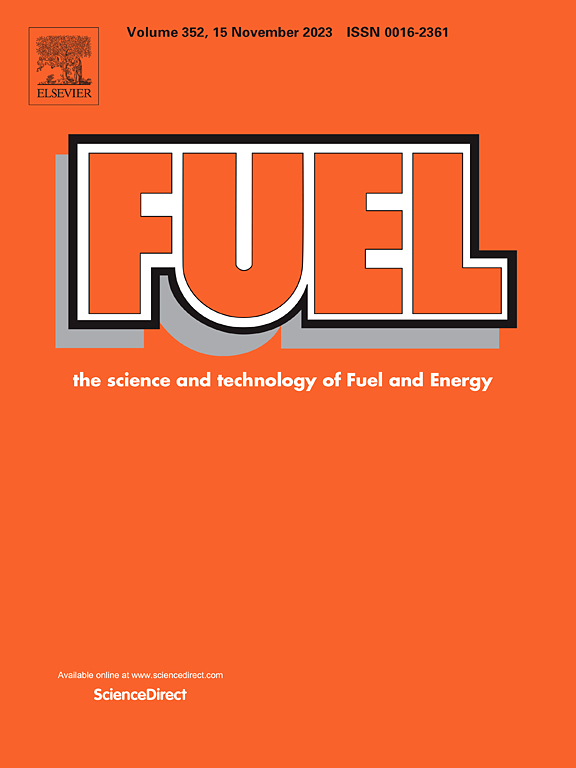人工智能驱动的生物制氢优化:ANN-GA、RSM和蟒蛇协同利用甘蔗甘蔗渣制备新型氨氧化Alcaligenes
IF 6.7
1区 工程技术
Q2 ENERGY & FUELS
引用次数: 0
摘要
通过暗发酵生产生物氢(bioH2)是一种有前途的可持续替代化石燃料的方法,特别是当利用木质纤维素农业残留物时。本研究选择甘蔗渣(sugarcane bagasse, SB)作为原料,因为其碳水化合物含量高、可利用性丰富、成本低,是微生物产氢的理想底物。采用新分离的高效产氢细菌Alcaligenes amioxyans SRAM对预处理后的甘蔗渣进行厌氧发酵。为了优化生物h2产率,采用中心复合设计(CCD)系统考察了底物浓度、接种量比、酸预处理浓度和pH四个关键工艺参数。采用响应面法(RSM)和人工神经网络(ANN)两种先进的建模方法,基于实验数据开发预测框架。在MATLAB和Python中开发了人工神经网络模型,通过准确捕获复杂的非线性相互作用并显著降低预测误差,显示出优于RSM的性能。为了增强优化过程,将人工神经网络模型与遗传算法(Genetic Algorithm, GA)进一步集成,得到了在Python中实现的混合人工神经网络-遗传算法模型。这种混合方法有效地确定了最大生物h2产量的最佳条件,预测误差最小为0.02。优化后的底物浓度为48.98 g/L,接种量为8.21% v/v,酸浓度为3.56% v/v, pH为7.02。本研究明确强调了a.a氨氧SRAM在高效生产生物h2方面的潜力,并提出了一个基于ann - ga的优化框架,以提高SB的生物h2产量,推进向可再生能源的过渡。本文章由计算机程序翻译,如有差异,请以英文原文为准。
Artificial intelligence-driven optimization of biohydrogen production: ANN-GA, RSM, and python synergy for novel Alcaligenes ammonioxydans utilizing sugarcane bagasse
Biohydrogen (bioH2) production through dark fermentation presents a promising and sustainable alternative to fossil fuels, especially when utilizing lignocellulosic agricultural residues. In this study, sugarcane bagasse (SB) was selected as the feedstock due to its high carbohydrate content, abundant availability, and low cost, making it an ideal substrate for microbial bioH2 production. A newly isolated and efficient bioH2-producing bacterium, Alcaligenes ammonioxydans SRAM was employed to ferment the pretreated bagasse under anaerobic conditions.
To optimize bioH2 yield, four critical process parameters substrate concentration, inoculum ratio, acid pretreatment concentration, and pH were systematically investigated using a Central Composite Design (CCD). Two advanced modelling approaches, Response Surface Methodology (RSM) and Artificial Neural Networks (ANN), were used to develop predictive frameworks based on the experimental data. ANN models were developed in MATLAB and Python, demonstrating superior performance over RSM by accurately capturing complex nonlinear interactions with significantly lower prediction errors.
To enhance the optimization process, the ANN model was further integrated with a Genetic Algorithm (GA), resulting in a hybrid ANN-GA model implemented in Python. This hybrid approach effectively determined the optimal conditions for maximum bioH2 production, achieving a minimal prediction error of 0.02. The optimized parameter set included a substrate concentration of 48.98 g/L, an inoculum ratio of 8.21 % v/v, an acid concentration of 3.56 % v/v, and a pH of 7.02.
This study clearly highlights the potential of A. ammonioxydans SRAM for high-efficiency bioH2 production and presents a robust ANN-GA-based optimization framework for enhancing bioH2 yields from SB, advancing the transition to renewable energy sources.
求助全文
通过发布文献求助,成功后即可免费获取论文全文。
去求助
来源期刊

Fuel
工程技术-工程:化工
CiteScore
12.80
自引率
20.30%
发文量
3506
审稿时长
64 days
期刊介绍:
The exploration of energy sources remains a critical matter of study. For the past nine decades, fuel has consistently held the forefront in primary research efforts within the field of energy science. This area of investigation encompasses a wide range of subjects, with a particular emphasis on emerging concerns like environmental factors and pollution.
 求助内容:
求助内容: 应助结果提醒方式:
应助结果提醒方式:


